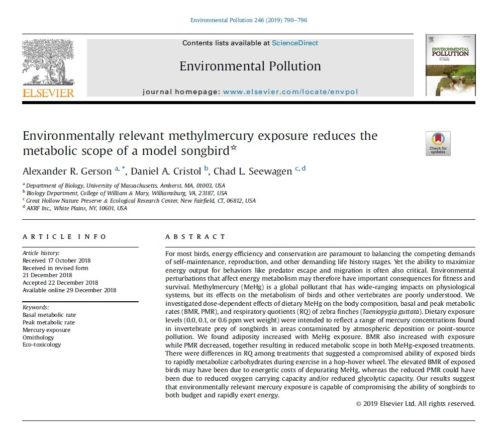
Great Hollow Grant Recipient Publishes Research on the Hemlock Woolly Adelgid
Great Hollow awards up to $5,000 in grants each year to support ecological research at and beyond our preserve. Applicants are allowed to be students or professionals of any age and career stage. The first recipient of one of these grants was UConn undergraduate student, Nicholas Russo, in 2017 for his senior thesis research on the potential dispersal of the hemlock woolly adelgid by migratory birds. The hemlock woolly adelgid is a non-native, invasive insect that kills eastern hemlock trees and is presently estimated to have infested over 45% of the tree’s current range throughout eastern North America. Before Nick’s research, how this pest had spread over such great distances in so little time was not known, but migratory birds were a suspected culprit.
During the spring and summer of 2017, Nick captured migrating and resident songbirds at several study sites in central and western Connecticut, including Great Hollow Nature Preserve, to inspect them for the hemlock woolly adelgid. He also experimentally infested old museum specimens of birds with the adelgid and placed them in trees at a hemlock nursery to see if, and after how long, the adelgids would crawl off of the birds’ feathers and onto the trees. He found that adelgids were hitching a ride on roughly 1 in 10 of the birds that he inspected, including many long-distance migrants that were likely heading all the way up to boreal Canada. He also observed adelgids crawling off of the museum specimens and onto the experimental tree branches to which they were affixed. Taken together, this suggests that birds are likely to be at least one mechanism by which the hemlcok woolly adelgid has been able to invade such a vast area of North America in so little time. However, Nick cautions that it remains to be confirmed that adelgids are capable of staying attached throughout and surviving long-distance bird flights, which can easily exceed 10 hours and hundreds of miles at high altitudes. Nevertheless, even short-distance dispersal is likely to facilitate the spread of this invasive pest into new areas and further complicate ongoing efforts of land managers in the U.S. and Canada to save eastern hemlock forests. Nick’s research was recently published in the peer-reviewed journal, Biological Invasions and can be read here.

 Previous Post
Previous Post Next Post
Next Post